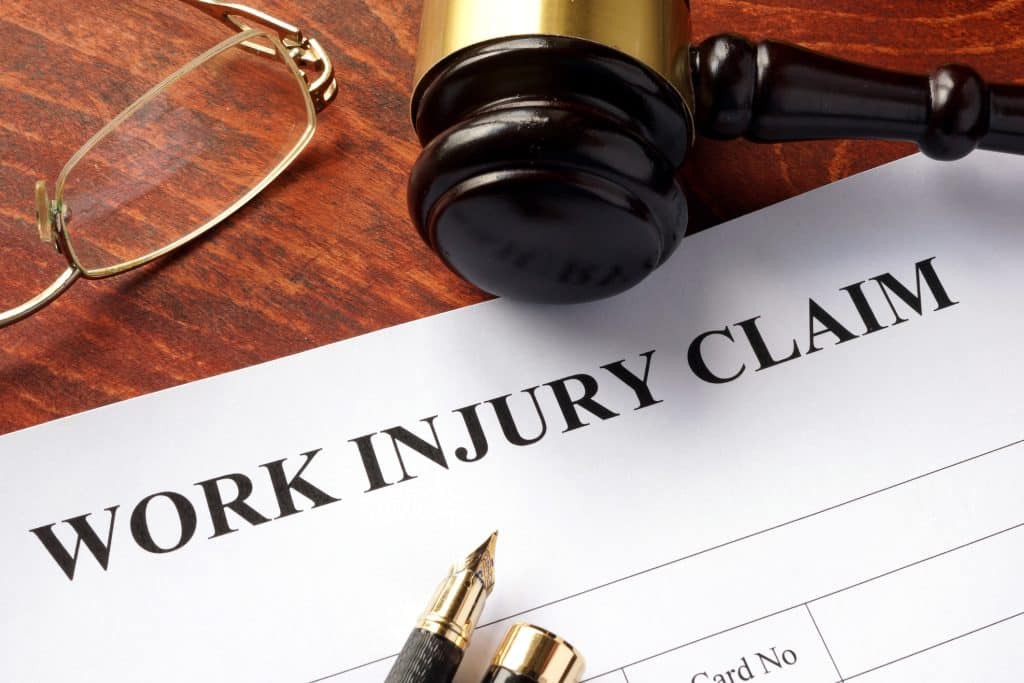If you are injured at work in Washington state, you are more than likely entitled to medical and financial workers’ compensation benefits from the state’s Department of Labor and Industries (L&I).
Contracting certain types of illnesses or diseases during the course of your work may also entitle you to benefits.
In any case, there are a few things you should do immediately to kickstart the workers’ comp claim process: seek medical treatment and tell your employer. At that point, you will have a better idea of whether your injury or illness is claim-worthy.
Read below to find out how to navigate the L&I claim process each step of the way!
What Kind Of Medical Treatment Should I Get?
Regardless of the type of injury, you should seek prompt medical attention. Every employer in Washington is required to have a first-aid kit, so make use of it.
You should then schedule an appointment with your doctor or go to the emergency room.
Doctors play a key role in the workers’ comp claim process. They will:
- Certify whether your injury is work-related and help you file a claim
- Determine when and how you can return to work
- Recommend all necessary treatment you may need
Remember that your first medical visit for a work-related injury or illness will be covered by L&I. For all subsequent visits, you must choose a doctor who is part of the L&I network of medical providers.
Be sure to choose a doctor who is supportive because they will make important decisions throughout your L&I claim process.
Tell Your Employer
Promptly alert your employer of a workplace injury or a diagnosis of an occupational disease so that they can prepare to fill necessary L&I paperwork. This also allows your employer to provide options for your return to work on light-duty (with medical approval), which may help maintain your salary at the time of the injury.
Remember that it doesn’t matter who caused the injury. Washington is a no-fault state, so L&I will cover all eligible claims regardless of who is at fault.
File Your Claim
Once you’ve sought medical treatment and alerted your employer of the workplace injury, it’s time to start the claim process.
Gather the following information before you start your claim:
- The location where the injury occurred
- Contact information for any witnesses to the injury
- Employer information
- Wage information
- Names and birth dates of your dependents
- If you have already seen a doctor:
- Your doctor’s first and last name
- Hospital or clinic where you received treatment
About 70% of workers’ comp claims in Washington are handled directly by L&I. If you fall in this category, you can open a claim by calling 1 (877) 561-3453, filing online, or filling out forms at your doctor’s office. Your doctor will need to complete an Accident Report form.
If you work for a self-insured employer, they will handle your paperwork and pay for the claim. To kickstart the claim process with a self-insured employer, you will need to obtain a Self‑Insurer Accident Report (SIF‑2) form from them. Your doctor will complete a Physician’s Initial Report (PIR) (F207‑028‑000) and mail it to your self‑insured employer’s claim representative.
Your claim officially goes on file when your doctor submits the workers’ compensation paperwork to L&I or your self-insured employer.
What Kind Of Paperwork And Deadlines Should I Expect?
Paperwork varies depending on the nature and severity of your injury or illness. A lawyer can help you make these determinations, file the appropriate forms and keep records of all paperwork, correspondence, phone calls, or other negotiations with L&I or your self-insured employer.
At this initial stage in the workers’ comp claim process, there are two deadlines or statutes of limitations you need to keep in mind:
- For injuries, you must file the claim within one year of your injury date.
- For an occupational disease or illness, you have two years from the date of your doctor’s diagnosis to file your claim.
If your workers’ comp claim is denied for any reason, you can protest it within 60 days by writing a letter to your claim manager. If you disagree with your claim manager’s decision regarding the protest, you may appeal to the Board of Industrial Insurance Appeals within 60 days of that decision.
Am I Eligible For Benefits?
If your claim is approved, you may be eligible for a variety of benefits, including medical care, if your doctor determines that it’s directly related to your injury. Other benefits may include wage replacement, assistance returning to work, and partial disability or pensions for severe injuries.
Your doctor will work with you to determine the most appropriate medical benefits for your specific case. For more complex cases, which may require more benefits for a longer duration, an attorney can help you secure what you deserve.
How Do I Estimate Wage Replacement Benefits?
Wage replacement, also called “time-loss compensation,” helps injured workers cover bills while they are unable to work. The benefit typically provides between 60-75% of the wages a worker was earning at the time of the injury. Because the Internal Revenue Service considers wage replacement a disability benefit, these payments are tax-free.
If you’re eligible for wage-replacement benefits, and no further information is needed, L&I or your self-insured employer will send the first benefit check within 14 days of receiving the doctor’s initial report.
Wage replacement checks are typically disbursed twice per month.
Learn more about common workers’ comp claim mistakes.
How Long Do Workers’ Comp Benefits Last?
Because some benefits are temporary (vocational rehabilitation), while others are permanent (total disability pension), it is difficult to generalize how long workers’ comp benefits may last. However, the typical duration of some of the more common benefits like wage-replacement and medical care are as follows:
Wage-replacement benefits will continue as long as your doctor verifies that your condition prevents your return to any work. If you or your doctor fail to regularly update L&I about your progress, your time-loss compensation checks may be delayed or stopped.
Medical benefits are typically available until you recover to the point that your injury or illness has reached maximum medical improvement (MMI), or when your claim closes.
If your L&I claim has closed but you still require medical care, you can work with your doctor to protest the decision within two months of the closure. If it has been more than two months since the closure, you and your doctor will have to request that your claim be reopened. A lawyer can assist in this process.
Call us today for a free case review. Our legal team will analyze your case and see if you can get workers’ comp for your injury.






